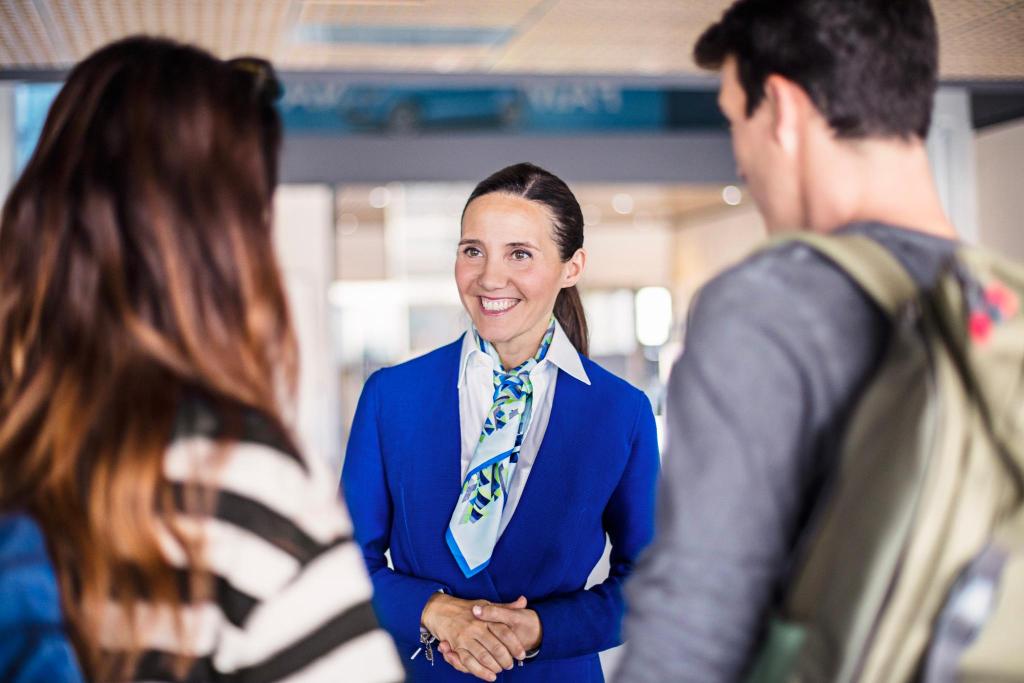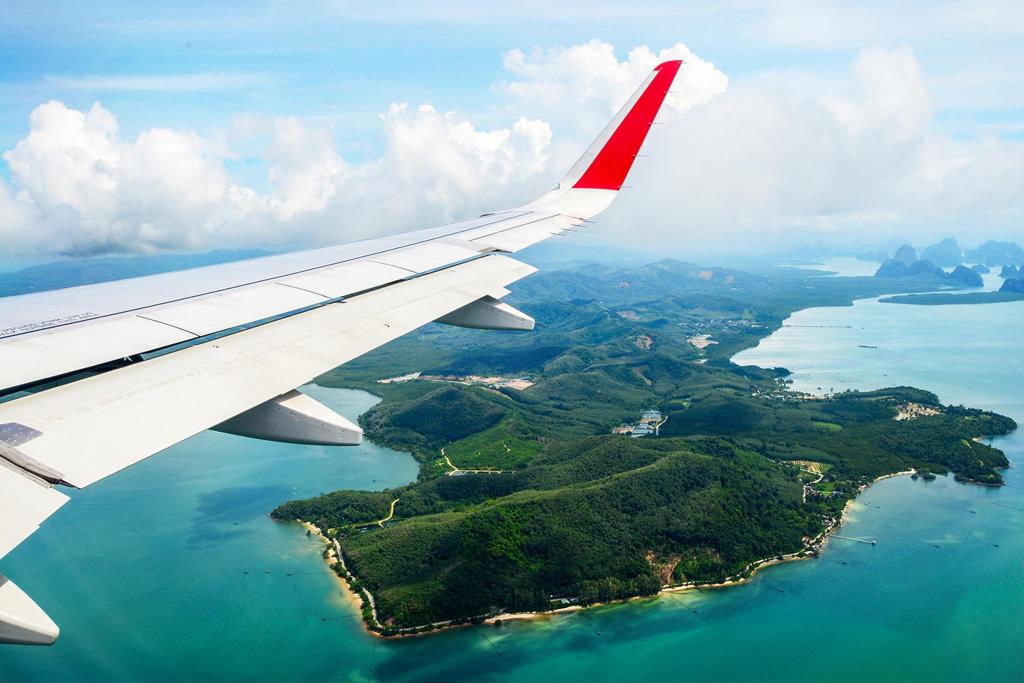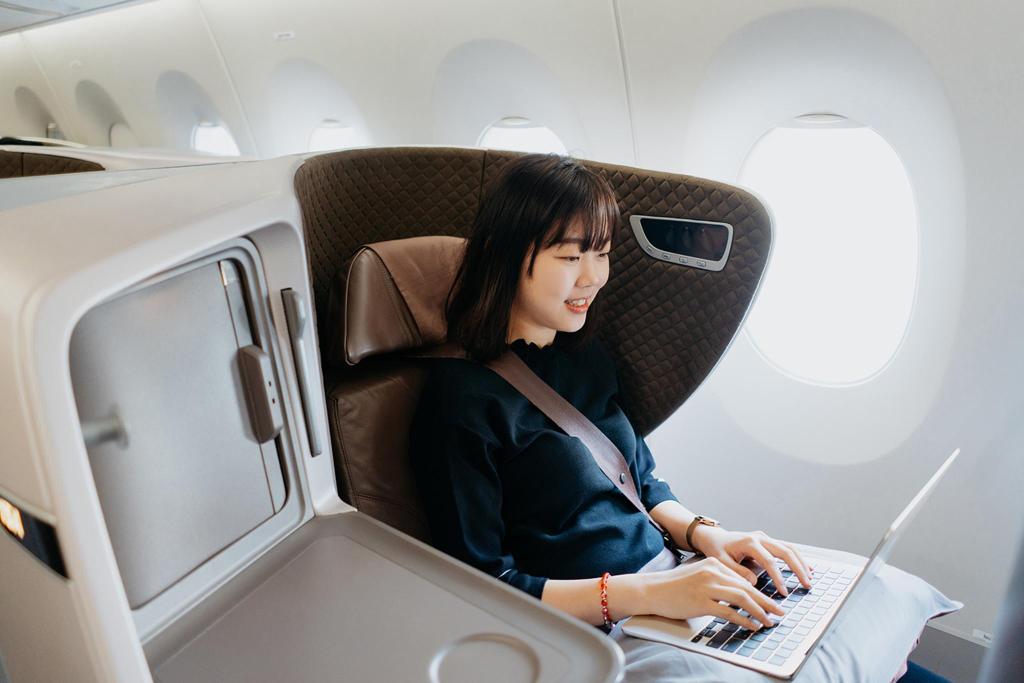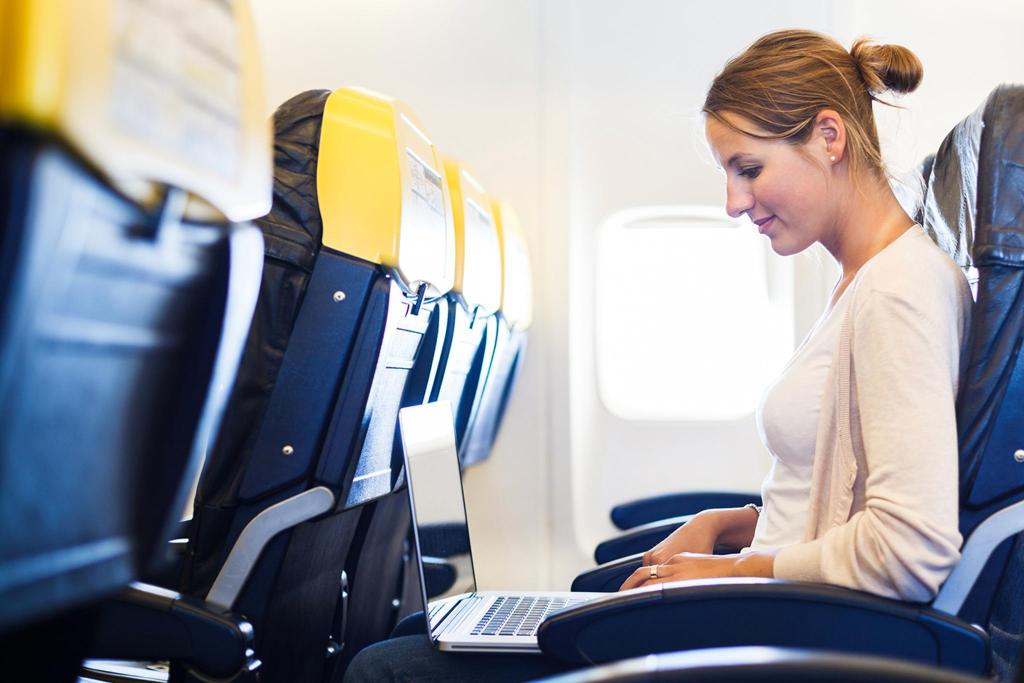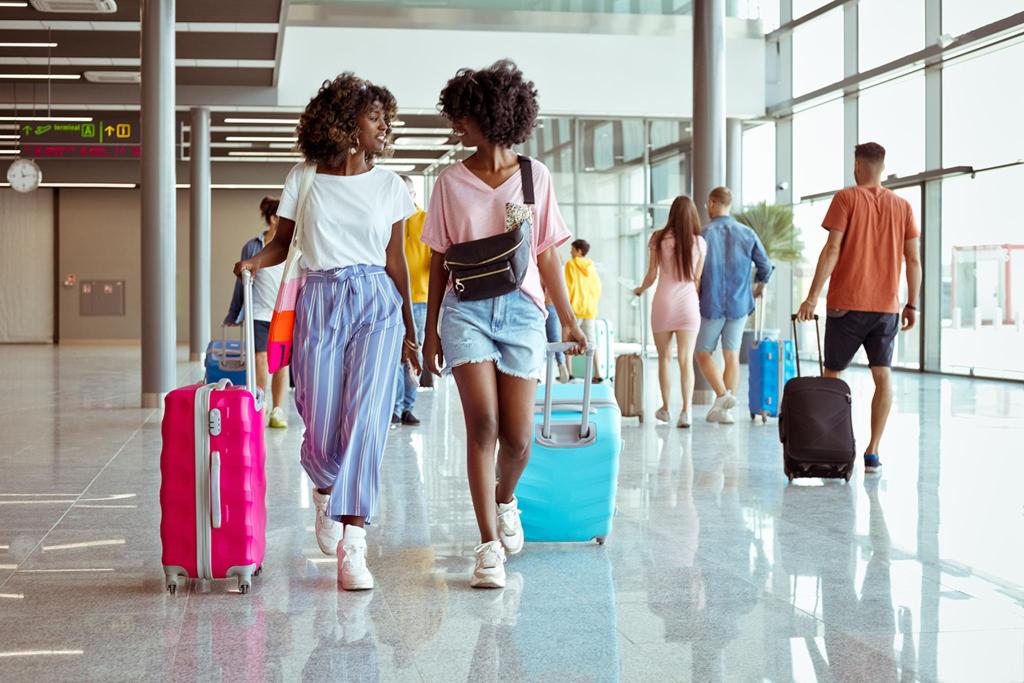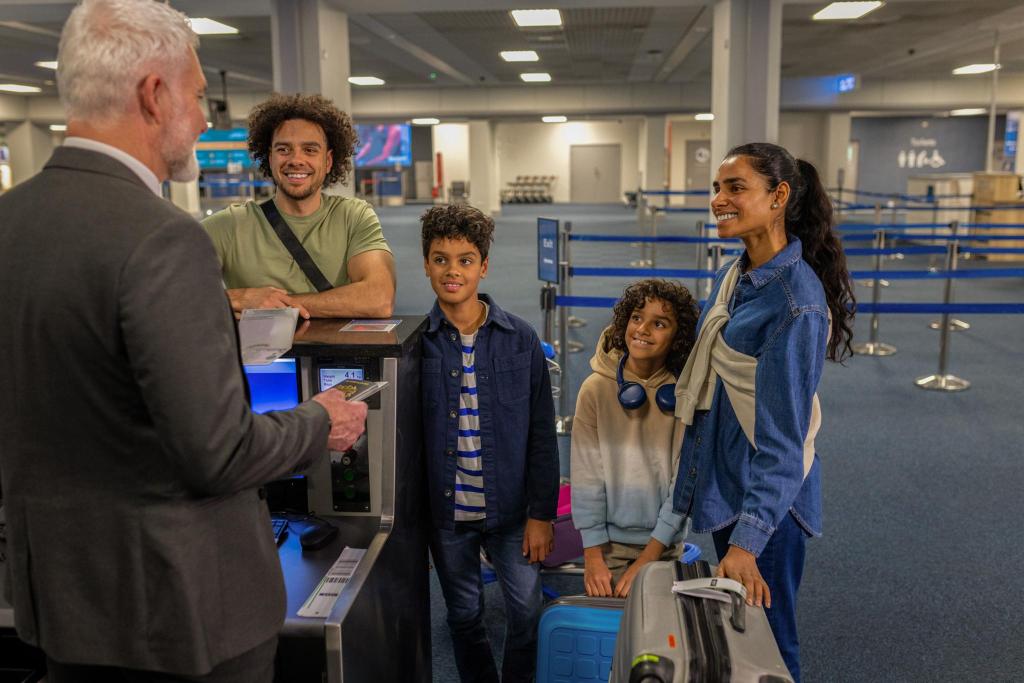
Making US Airports Manageable for Neurodivergent Travel
Air travel is gradually becoming more accessible and accommodating for neurodivergent individuals, thanks to various initiatives, training programs, and policy changes, but planning ahead makes neurodivergent travel more manageable and less stressful.
Travel, by its very nature, brings the unpredictable and the unexpected. These variables take the form of changes to routine and environment, unfamiliar situations, and typically, sensory overload – factors that are particularly overwhelming for neurodivergent individuals, both children and adults.
Since unpredictability is part of the experience, focus on planning as effectively as possible for the aspects you can control. Here are some tips for neurodivergent travel that can make the journey go as smoothly as possible.
Tips for neurodivergent travel

Plan ahead
Even if your trip is months away, planning well in advance helps reduce last-minute stress. Dedicate time to make a detailed checklist, dividing it into three sections: tasks to handle before departure (like packing), things to manage during the trip—such as itineraries or bookings—and actions to take after returning home. It's also helpful to set up regular time slots and reminders in your calendar for trip planning as soon as you book. This approach keeps you accountable and minimizes the chances of procrastinating or delaying tactics.
Create a detailed visual itinerary with travel times, activities, and designated rest periods to minimize uncertainty and manage sensory overload.
Get familiar with a mock airport experience. Programs like Wings for Autism and Wings for All, organized by The Arc and local partners, allow families to practice the airport experience. Participants go through check-in, security, boarding, and even sitting on an aircraft to familiarize themselves with the process.
Communicate with providers early-on. Contact airlines and hotels beforehand to request accommodations like early boarding, quiet rooms, or accessible features.
- Sensory considerations: pack sensory tools like noise-canceling headphones, earplugs, weighted blankets, fidget toys, or calming music to manage overstimulation.
- Research destinations: look for quiet areas, sensory-friendly attractions, and accessible options at your travel destination.
- Bring comfort items: pack familiar snacks, favorite books, or comfort items to help you feel grounded in new environments. Noise cancelling headphones are essential for many people on the spectrum.
- Consider accessibility: check accessibility features at airports, hotels, and attractions, including accessible restrooms and transportation options
- Practice travel routines: if possible, practice aspects of travel like airport security procedures or boarding a plane in advance to reduce anxiety.
- Seat selection: when booking flights, request an aisle seat near the front for easier access and to minimize claustrophobia
- Take breaks: schedule regular breaks throughout your trip to recharge and avoid sensory overload.
- Consider a travel companion: if needed, travel with a trusted friend or family member who can assist with communication and navigating challenges.
Give yourself lots of time

Arrive at the airport, port, train, or bus station early and ask to board among the first. Pre-boarding will give you ample time to deal with any unexpected problems, as well as to familiarize yourself with your new surroundings. Plus, you can use that extra time to wipe the seat clean, get situated, and use the restroom well before everyone else boards.
Here are several reasons why giving yourself plenty of time at the airport benefits neurodivergent travelers:
- Reduced stress: extra time helps minimize anxiety caused by rushing or unexpected delays, allowing you to approach the experience more calmly.
- Time to adjust: airports are overwhelming with crowds, noise, and unfamiliar settings. Arriving early allows you to acclimate at your own pace.
- Flexibility for sensory breaks: if the sensory environment becomes too much, you have the freedom to find quiet spaces or take a break without feeling pressured by time constraints.
- Preparation for security: the security process can be unpredictable and intense. Allowing extra time ensures you can navigate it at a comfortable pace without feeling hurried.
- Opportunities to organize: you’ll have time to double-check your documents, organize your carry-on items, and prepare for your flight in a stress-free manner.
- Access to amenities: many airports offer resources like quiet rooms, sensory-friendly spaces, or assistance services. Having extra time ensures you’re able to locate and use these if needed.
- Time to process changes: airports often involve transitions (e.g., checking bags, moving through terminals). Extra time allows you to mentally and physically prepare for each stage.
Consider packing in advance
The best time to start packing is a week in advance (use that packing list) and never leave it to the night before, as last-minute emergencies always seem to pop up, leaving you irritable and exhausted, which is stressful for everyone involved.
Bonus tip: travel with hand luggage wherever possible and put a trackable GPS tag inside your suitcase if you need to check luggage for a longer trip.
Inform staff
The travel industry has worked to become more inclusive of neurodivergent travelers, with airports offering sensory rooms and trained staff. Companies attempting to accommodate neurodivergent people need to remember that even though autistic people share a general diagnosis, each person’s individual needs will vary.
A sunflower-decorated lanyard, from the Hidden Disabilities Sunflower program is recognized at more than 240 airports worldwide. They discreetly signal to staff that these travelers need extra help and time in the airport.
At airports in the United States, with 72 hours’ notice, the Transportation Security Administration (TSA) provides assistance to individuals with disabilities or medical conditions during the security screening process, and officers with specialized training to assist and communicate with these travelers. You can inform the TSA officer by using a printed out notification card.
*The information above is sourced from the official Hidden Disabilities Sunflower programs website in December 2024.
Many airlines also offer assisted passengers pre-boarding, so checking and requesting this in advance is worth checking.
Airlines also offer help as and when you need it. If you’re noise-sensitive and end up next to a screaming child, for example, you can always ask to change seats, and many airlines will accommodate if there’s something within the same class or cabin available. It’s always worth asking.
Clearly explain your needs to airport staff as well as fellow passengers. For example, if you are situated next to someone talking extremely loudly, explain your sensory issues and ask them if they would be willing to talk in a quieter range.
Prepare for unexpected outcomes
The biggest challenge is unknown timelines and unknown procedures – all the unknowable variables produce palpable uncertainty.
Avoid connecting flights as much as possible, because fewer flights mean fewer opportunities for something to go awry.
Prep yourself for the possibility of delayed or lost luggage which, unfortunately, has increased in frequency over the last few years, especially on US domestic flights. You can fix the situation by having insurance, which covers some of the loss, as well as by packing your hand luggage adequately.
Especially for those with fixed preferences, pack one hand luggage with at least two days’ worth of personal clothing, electronics and medicines.
Find your quiet place
US airports are increasingly introducing sensory-friendly lounges and multi-sensory rooms to support travelers with sensory sensitivities or cognitive disabilities. These spaces are designed to provide a calm and supportive environment amidst the often overwhelming airport atmosphere.
Sensory-friendly lounges
For instance, in November 2024, Detroit Metropolitan Wayne County Airport (DTW) unveiled a multi-sensory room. This room features amenities such as a crash pad for deep pressure to reduce anxiety, a fiber optic bean bag, a music hand wall, a sensory wall, and a tree with a built-in cubby, all aimed at promoting relaxation and self-regulation.
In December 2024, San Francisco International Airport (SFO), one of the busiest airports on the West coast of the US, opened a new room for neurodiverse travelers and families. The activity area has analog and digital activities, the calming area is meant for contemplation and wonderment, and the cabin experience has a full-scale aircraft interior mockup.
Quiet spaces
Many US airports provide quiet spaces designed to support individuals with autism or sensory sensitivities. They feature a low-stimulation environment, they are usually away from high-traffic areas, with minimal noise, dim lighting, and comfortable seating. Designed for privacy and relaxation, helping individuals decompress before or after a flight. Myrtle Beach International Airport (MYR) opened their first quiet room in 2016, the first of its kind in the US. The quiet room is in the baggage claim area, providing a peaceful space for travelers to relax and recharge and available to all passengers seeking a tranquil environment during their journey.
In April 2021, Seattle-Tacoma International Airport (SEA) introduced a sensory room designed to provide a calming environment for neurodiverse passengers. Features include dimmable lighting, acoustic panels, and various seating options to help travelers recenter before their flights.
Incorporate relaxation

When traveling as an adult with autism, key strategies include: thorough planning with visual schedules, communicating needs to airlines and hotels in advance, packing sensory comfort items like noise-canceling headphones or fidget toys, identifying sensory-friendly lounges and quiet spaces to retreat to when overwhelmed, and ensuring access to familiar foods and routines to help manage the anxiety that all the variables of air travel intensifies.
Know your (new) rights
In December 2024, Secretary Buttigieg announced a new set of sweeping protections for airline passengers with disabilities, described as “the biggest expansion of rights for this population in a generation.” The new rules, which will be effective January 2025, covers several areas. While many are focused on wheelchairs and mobility devices, they also extend to invisible disabilities such as autism.
These new rights include:
- Safe and dignified assistance standard.
- Enhanced training for airline personnel and contractors.
- Prompt enplaning, deplaning, and connecting assistance.
- Rebuttable presumption of violation for mishandlings.
- Passenger notifications.
- Publication of information related to aircraft cargo holds.
- Reimbursement of fare difference.
- Rebooking requirements.
- Seating accommodations at the airport.
- New improved standards for on-board wheelchairs.
- Airline employees and contractors who support passengers with disabilities or handle mobility equipment will receive annual training, including hands-on instruction.
Air travel is gradually becoming more accessible and accommodating for individuals with autism in the US, thanks to various initiatives, training programs, and policy changes. Recent regulations like this demonstrate the recent changes in attitude to travelers with autism. From TSA cares to better informed staff with specialized training to assist and communicate to calm spaces designed to thwart overstimulation, new accommodations have proliferated.

- Održivost
- Pravila za putovanja
- Velnes
- Prilagođenost različitim grupama korisnika
- Saveti u vezi sa letovima
 Flying to Alaska: The Complete Guide for Travelers2. april 2025.
Flying to Alaska: The Complete Guide for Travelers2. april 2025. How To Navigate Customs and Immigration28. mart 2025.
How To Navigate Customs and Immigration28. mart 2025. The 10 Best Airports for Layovers28. mart 2025.
The 10 Best Airports for Layovers28. mart 2025. The Complete Guide to Flying Premium Economy28. mart 2025.
The Complete Guide to Flying Premium Economy28. mart 2025. The Ultimate Packing List for Vacations28. mart 2025.
The Ultimate Packing List for Vacations28. mart 2025. What are the Best US Airports for Flight Connections18. mart 2025.
What are the Best US Airports for Flight Connections18. mart 2025. The Complete Guide to Flying Economy: How Do Different Airlines Compare?16. decembar 2024.
The Complete Guide to Flying Economy: How Do Different Airlines Compare?16. decembar 2024. The Complete Guide to Airplane WiFi: How to Stay Connected While Flying20. novembar 2024.
The Complete Guide to Airplane WiFi: How to Stay Connected While Flying20. novembar 2024. Which Times of Year are the Busiest for Air Travel in the US?7. novembar 2024.
Which Times of Year are the Busiest for Air Travel in the US?7. novembar 2024. Flying to Hawaii: the complete guide for travelers12. septembar 2024.
Flying to Hawaii: the complete guide for travelers12. septembar 2024. What Is Global Entry, and How Does It Work?25. avgust 2024.
What Is Global Entry, and How Does It Work?25. avgust 2024. Everything you need to know to book a flight24. jul 2024.
Everything you need to know to book a flight24. jul 2024.
Možda će vam se svideti i sledeće
Learn essential airplane etiquette with our guide to the dos and don'ts of flying. Master plane manners, armrest rules and more for a smooth journey.
Do you need a passport to fly to Alaska? Explore everything you need to know about flying to Alaska, including which airlines fly from the US and more.
Have spare $50,000 to burn? Here are the world’s most expensive plane tickets you can buy and a glimpse at what you get for your money.
Our travel experts share which airlines have incredible business-class seats and how they compare.
Stay productive with these expert business travel tips: maximize comfort, utilize onboard amenities, and optimize your travel time for efficiency.
Discover essential airplane hacks from seasoned travelers. Save time, money and stay comfortable with these expert tips for a smoother flight.


